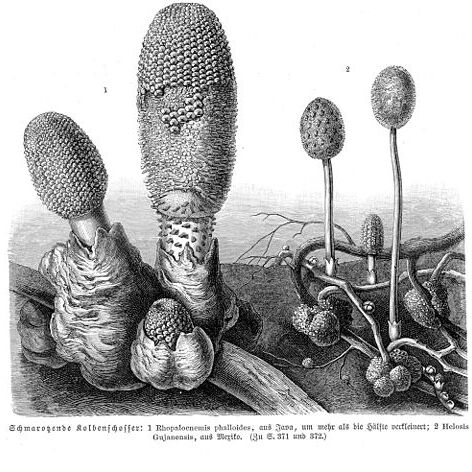Plants monoecious or dioecious. Rhizome thick, smooth or irregularly corrugate, containing abundant starch, with sheathlike extension surrounding base of scape. Leaves on male shoots scale-like but absent on female shoots. Scape robust. Inflorescences spadixlike, oblong-cylindric, covered by numerous scale-like bracts and flowers; scale-like bracts thick, multiangular peltate, complanate, margin adherent, caducous at anthesis. Male flowers: perianth tubular, apex irregularly dentate or 4-lobed. Stamens connate into a synandrium; anthers united into a head, with 20-30 locelli in 2 or 3 layers. Female flowers: perianth adnate to ovary, forming 2 low crests apically on ovary. Ovary ellipsoid, 1-loculed; ovules anatropous. Styles 2, elongated; stigmas capitate. Fruit narrowly oblong. Seeds globose.

